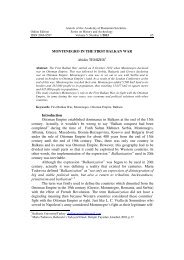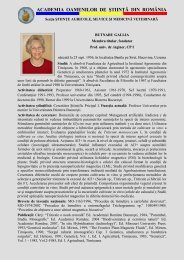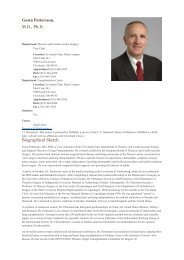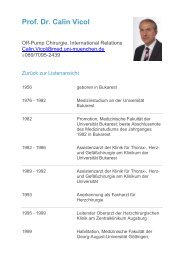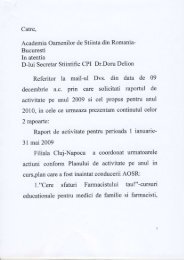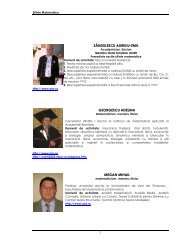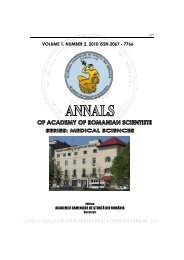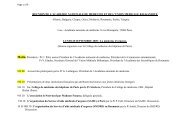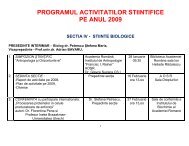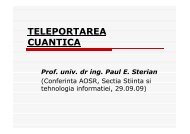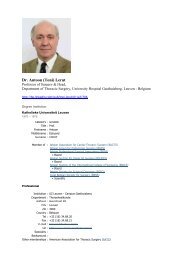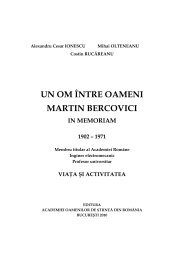Volume 3 nr 1 / 2011 - Academia Oamenilor de Stiinta din Romania
Volume 3 nr 1 / 2011 - Academia Oamenilor de Stiinta din Romania
Volume 3 nr 1 / 2011 - Academia Oamenilor de Stiinta din Romania
- No tags were found...
Create successful ePaper yourself
Turn your PDF publications into a flip-book with our unique Google optimized e-Paper software.
Analytical Evaluation of Crack Propagation for Bulb Hydraulic Turbines Shafts 49Initial shaft (Russian license). The shaft is constituted from three parts assembledthrough wel<strong>din</strong>g. The two half-finished parts placed near the electric generator aremanufactured through forging. The half-finished flange for coupling is manufacturedthrough casting. The machine working at final dimensions is done after wel<strong>din</strong>gfollowed by heat treatment and cheek-out. After that, the connecting zones betweenthe flange and the main cylindrical part (zones where occurred cracks during theoperation) were bring-up to the final shape through rough turning (Ra = 20 m).Table 2. Data regar<strong>din</strong>g shaft geometryDataShaft lengthShaft diameterFlange diameterShaft weightValue7572 mm1200 mm1700/2298 mm51.170 kgTable 4. Running hours for the refurbished turbines(hours)HA3 HA4 HA5Total R 143.647 136.397 157.2792008 16.257 22.915 7.417Total R - total running hours till the refurbishingTable 3. Running hours for not refurbished turbines (hours/state)HA1 HA2 HA6 HA7 HA8 HA9 HA10177.560 178.594 158.336 165.563 165.804 108.109 93.908F F F N N F NN –Not controlled, F – cracksRefurbished shaft. The half-finished shaft is manufactured entirely by forging.The employed material, the final dimensions and the machine working operationsare i<strong>de</strong>ntical with those for the initial shaft.3. Shaft material and corrosion resistanceIn Tables 5 and 6 there are presented characteristics of the employed material.From the chemical composition (Table 5) it results, that the material is lightmanganese alloyed steel. The low proportion of chromium and nickel (especiallychromium) is ina<strong>de</strong>quate to confer a good resistance to corrosion, inclusive intercrystalline corrosion. Taking into account the influence of manganese on thecrystalline grains, we appreciate that the principal alloying element <strong>de</strong>termines arough structure of the flange material, especially for casted pieces (great and nonuniformdimension of the grains). Therefore, the corrosion resistance of the materialis relatively low.Table 5. Shaft material mechanical characteristics Table 6. Shaft material chemical compositionCharacteristic ValueChemical Element ProportionR p0,2 255.05 N/mm 2 Mn 1…1,3 %R m 470,88 N/mm 2C0,16…0,22%Si0,60…0.80%Cr, Ni, Cu < 0,3%S, P



